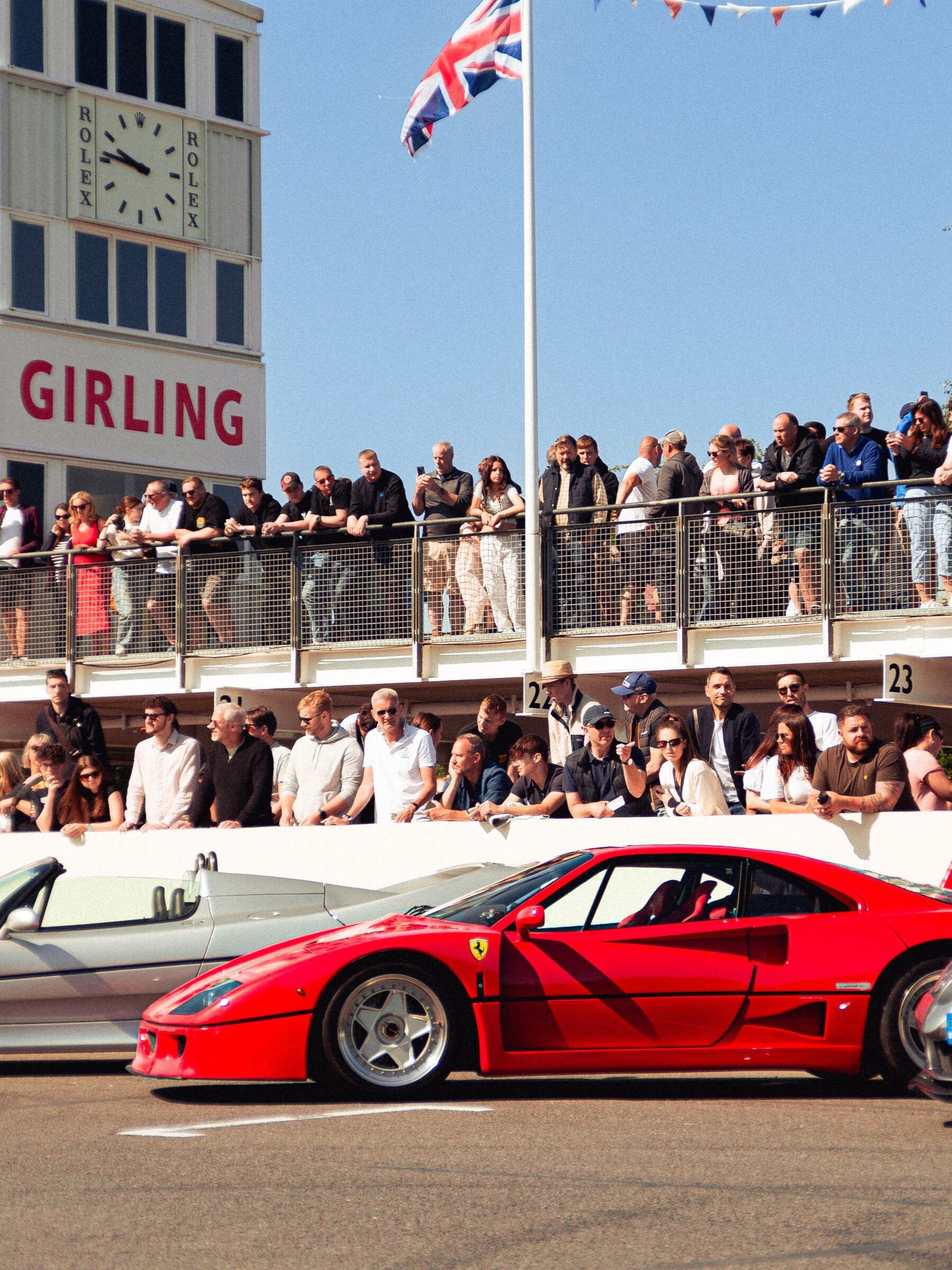The nine best road cars of the 1980s
We’ve covered the hot hatches and the supercars and then some more hot hatches so we decided it was about time the less lairy machinery got a look in. The 1980s was the time when car makers were finding their feet again after the strictures of the ‘70s, and a lot of the road car engineering and technology we take for granted today has roots stretching back to this period.

Audi Quattro (1980)
Just sneaking into this decade, with an unveiling at the 1980 Geneva Motor Show, the Quattro was first envisaged in 1977 by Audi engineer Jörg Bensinger who believed that the Volkswagen Iltis, a military vehicle, could provide the basis for an all-wheel-drive road car. Based on the Audi 80 coupe, the Quattro used a turbocharged and intercooled inline five-cylinder engine of 2.1-litre capacity, producing 200PS (147kW).
Famously the first car to take advantage of the World Rally Championship’s new rules allowing four-wheel drive, the Quattro first stormed the stages in 1981, making Michèle Mouton the first woman to win a WRC rally. The Quattro itself took championship titles in 1982 and 1984. The road car was largely hand built on a separate production line to the 80 it was based on and over the course of 11 years sold a scant 11,452 examples.

Fiat Panda (1980)
Also making its global debut at the Geneva Motor Show as a car that shared the Quattro’s square edged styling if not much else. At least until the beloved Panda 4x4 appeared. The design brief given to Giorgetto Giugiaro at Italdesign was for a utilitarian car in the mould of the Renault 4 or Citroen 2CV. Furthermore, it should weigh and cost no more than the Fiat 126 it was to replace and be a classless car, able to be seen anywhere. Giugiaro also decided that the car’s boot should accommodate two 50-litre demijohns of wine with four passengers up front.
The resulting car was so simple that on first seeing the mock-up Fiat’s marketing head thought the interior trim was all missing. As well as the basic – but highly functional – interior the car used flat glass throughout for lightness and simplicity and nearly flat body panels. Giugiaro said of the car: “The Panda is like a pair of jeans: a simple, practical article of clothing without pretense. I tried to give it the essential quality of a military design — in particular a helicopter: something light, rational, and optimized for a specific purpose.” It was in production for an incredible 23 years with nearly 4.5 million sold.

Honda CR-X (1983)
We love the grandiose names Japanese manufacturers occasionally give to their models. No European maker would be bold enough to call its car the ‘Civic Renaissance Experiment’. The Honda design team was allegedly inspired by the Alfa Romeo GT Junior Zagato owned by one of them and would adopt that car’s philosophy of a body stretched tight over simple mechanicals.
Initially offered with 1.3-litre and 1.5-litre engines and aimed at efficient commuting, the CR-X gained an Si variant in 1985 which in Japan and Europe had a 1.6-litre with around 140PS (103kW), plenty in a car weighing well under a tonne. Even with a torsion bar front and beam axle rear (updated to all-round double wishbones for the second generation) the CR-X was a fine thing to fling around, the driver egged on by its eagerly revving engine all while still enjoying around 40mpg.

Jeep Cherokee (1983)
The Wrangler may be the Jeep which garners all the attention but the XJ generation Cherokee was, and is, undoubtedly the better car, doing for the Jeep brand what the Range Rover had done for Land Rover a decade earlier. The key was Jeep’s adoption of monocoque construction for the Cherokee, making it an American first as well as Jeep’s first clean sheet design since the ‘60s Wagoneer.
The Cherokee was more than half a tonne lighter, a metre shorter as well as lower and narrower than its predecessor SJ series but with almost exactly the same passenger and loadspace. Little wonder that Jeep felt able to market it as a ‘sportwagon’. That is not to say that the Cherokee lacked go-anywhere ability, available as it was with transfer cases, four-wheel drive and a torquey and unstoppable 4.0-litre straight-six. In fact the only thing not to like about the XJ Cherokee is the fact that it is probably largely responsible for the SUV trend.

Renault Espace (1984)
The Espace is sadly no longer sold in the SUV-obsessed UK even though it still offers the same virtues of huge interior space, versatility and comfort as it has from the beginning. That starting point was in fact for an entirely different company to Renault; it was originally envisaged as a Simca, then owned by Chrysler UK. When those two firms were bought up by PSA Peugeot Citroen in 1978, Simca was shuttered and the design rights returned to Matra, which promptly took it to Renault.
There it was adapted for the firm’s longitudinal engines and received a flat floor, increasing its already considerable versatility. Matra ended production of its Murena sports car to make way for the Espace which was constructed on a galvanised steel chassis with a fibreglass body. Despite selling just nine examples in its first month, it was soon embraced by Gallic car buyers and beyond. However, we are sorry to break it to our French readers but what would become the Espace was conceived by British designer Fergus Pollock and actually designed by the Greek Antonis Vollanis.

Mercedes-Benz E-Class (1984)
The reasons usually given for the fact that the first-generation E Class is still a relatively common sight on our roads nearly 30 years on is Mercedes’ incredible engineering, attention to detail and build quality of the time. Which is perfectly true but also overlooks the sheer number of variants produced. The W124 was offered as a saloon, an estate, a coupe, a cabriolet, a limousine and even a rolling chassis in standard and long wheelbase forms.
Then there was the range of engines which stretched from inline fours to large V8s, encompassing a solo five-cylinder and inline sixes along the way and offered both petrol or diesel depending on your preference. The E Class was also well ahead of its time with a focus on aerodynamics for efficiency – it included a flat underside – and multilink rear suspension with optional self-levelling. On sale for just over a decade the E Class sold more than 2.5 million examples.

BMW M5 (1985)
The current BMW M5 undoubtedly has the performance and presence of a hand-built supercar, but it is the first of the famous lineage that has the greatest claim to be one. It was based on the second-generation, E28, 5 Series which, interesting fact alert, was partly designed using BMW’s payroll computer, the only one the company possessed at the time.
Based on the 535i variant of the sharknose 5 Series, the M5 built on its all-round independent suspension and disc brakes with something seriously special. That was the straight-six engine lifted virtually unchanged from the astonishing M1 mid-engined supercar. Producing 286PS (210kW) from 3.5-litres, it made the M5 the fastest saloon in the world when it launched at the Amsterdam Motor Show in 1985. Hand-built in Bavaria, the E28 M5 is one of the rarest M cars ever with just 2,241 examples sold.

Toyota Corolla AE86
While there are many approaches to motoring in its broadest sense – apart from the current ‘SUVisation’ of everything – most of us would agree that there is a set formula for affordable fun. That is low weight, rear-wheel drive, sufficient but not superfluous power and three pedals. Get it right and legends are created. Case in point, the Toyota AE86, which proves that even everyday underpinnings can become great. The AE86 was nominally based on the fifth-generation Toyota Corolla and we say nominally because that was a conventional front-wheel-drive model.
While it would have been easy enough for Toyota to stamp out plenty of front-wheel-drive coupes with vaguely sporting pretensions, the company decided to do it properly. So, the AE86 got a high-revving 1.6-litre, 16-valve twin-cam that revved to 7,800rpm, a five-speed manual gearbox, Macpherson strut front suspension, 50:50 weight distribution and even an optional limited-slip diff. It was perfectly timed to take advantage of the relatively new but growing sport of drifting and became the co-star of the Initial D manga set in the drift scene.

Lexus LS400 (1989)
We were also surprised that that the Lexus LS400 was a product of the ‘80s rather than the ‘90s, but in fact Toyota kicked off its F1 – for “Flagship” and “No.1” – vehicle project as far back as 1983. There was no specific budget or timeline for the project or requirement to use existing Toyota parts of platforms. Instead, the brief was simply to beat the best of the Europeans and American flagship saloons for comfort, quietness, speed and efficiency. The development team would include thousands of engineers and technicians building 450 prototypes which covered nearly two million miles on roads around the world.
Launched under the entirely new Leuxs brand in January 1989 at the Detroit Motor Show, the LS400 boasted a 4.0-litre, 32-valve quad-cam V8 producing 250PS (184kW) and all-round double wishbone suspension. The cabin featured leather and walnut, memory seats and holographically projected instrument panel. It was indeed quieter, faster, slipperier and lighter than rivals from BMW and Mercedes. It immediately became the bestselling luxury saloon in the US and remained so for 15 of its first 17 years. It was also hugely overengineered with examples regularly clocking up over one million miles on the road.
List
Audi
Quattro
FIat
Panda
Honda
CR-X
Jeep
Cherokee
Renault
Espace
Mercedes
E-Class
BMW
M5
Toyota
Corolla
AE86
Lexus
LS
LS400





